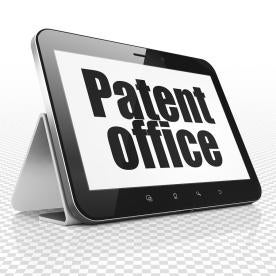The U.S. Court of Appeals for the Federal Circuit convened an en banc panel to examine the Supreme Court’s “Raging Bull” decision inPetrella v. Metro-Goldwyn-Mayer, Inc. in the context of deciding whether laches remains a defense in a patent infringement suit. After an in-depth analysis, the Court concluded that Congress intended for laches to apply in patent matters when it codified laches under 35 USC §282(b)(1) of the Patent Act. However, the Court made a point to note that the laches defense must be harmonized with Petrella and other Supreme Court precedent. The Court clarified that equitable principles apply whenever an accused infringer seeks to use laches as a bar to injunctions or ongoing relief, while laches will only foreclose an ongoing royalty in extraordinary circumstances. SCA Hygiene Products AB et al. v. First Quality Baby Products LLC et al., Case No. 13-1564 (Fed. Cir., September 18, 2015) (en banc) (Hughes, J., concurring-in-part and dissenting-in-part).
In 2003, SCA Hygiene Products (SCA) sent a letter to First Quality Baby Products (First Quality), a competitor in the adult incontinence market, alleging that First Quality’s Prevail® All Nites™ product infringed a patent held by SCA pertaining to certain aspects of adult diapers. First Quality responded to the letter stating that it had located a prior art patent describing the same diaper construction, which invalidated the SCA patent and thereby precluded infringement by First Quality.
SCA did not respond to First Quality’s reply. Instead, in 2004, SCA requested re-examination of its patent in view of the prior art patent cited to it by First Quality. SCA did not notify First Quality of the re-examination proceedings, but the company presumed that First Quality was following the proceedings due to their public nature. In the meantime, First Quality believed that SCA had dropped its infringement claims, and it continued to invest in and expand its adult incontinence products line, including multimillion dollar acquisitions of competitors’ businesses.
In 2007, the USPTO confirmed the patentability of SCA’s patent. In August 2010, more than three years after the conclusion of the re-examination and over seven years since SCA last communicated with First Quality regarding the its patent, SCA filed a complaint for patent infringement. The district court granted First Quality’s motion for summary judgment on the issues of laches and equitable estoppel. SCA appealed, arguing that the Petrella decision abolished laches in patent law. In September 2014, a panel of the Federal Circuit rejected SCA’s Petrella arguments and affirmed the district court’s opinion on laches, but reversed as to equitable estoppel. SCA filed a petition for rehearing en banc, and the Federal Circuit granted the petition with respect to two questions:
In light of Petrella, which addressed laches under the Copyright Act, should the Federal Circuit’s 1992 decision in Aukerman be overruled so that the defense of laches is not applicable to a claim of damages on patent infringement occurring within the six-year damages limitations period established by the Patent Act?
Because there is no statute of limitations for claims of patent infringement, should the defense of laches be available under some circumstances to bar an entire infringement suit for either damages or injunctive relief?
Viability of Laches After Petrella
As for the first question, after examining history of the laches defenses by the courts, congressional intent, and precedential decisions in this area, the Federal Circuit reconciled Aukerman with Petrella, noting that Petrella was fundamentally concerned with the separation of powers and therefore eliminated judicially created laches because Congress had already spoke on the timeliness of infringement claims in the Copyright Act. However, the Court found a different statutory scheme in the patent law because 35 U.S.C. §286 provides for time limitations on recovery of legal remedies within six years of the filing date of the infringement action, while 35 U.S.C. §282 provides for laches as a defense to legal relief. Therefore, the Court reasoned that the same separation of powers concern that the Supreme Court discussed in Petrella is not present in matters arising under the patent laws.
The Federal Circuit also distinguished copyright and patent law on the grounds that copyright infringement requires evidence of copying, while intent (or ignorance of a patent) is not a defense to patent infringement. Accordingly, the Court determined that it makes sense to limit damages by applying laches in a patent case where an infringer may not know he is infringing. On the other hand, a potential defendant in a copyright infringement action is typically aware of the risk that he or she is infringing and can usually estimate his or her exposure and liability. Therefore, the Court determined that laches remains a viable defense to legal relief in actions for patent infringement.
The Application of Laches to Ongoing Relief
As for the extent to which laches can limit recovery of ongoing relief, the Federal Circuit reexamined Aukerman in light of Petrella, as well as the Supreme Court’s eBay decision. The Court, noting the four-factor eBay test for injunctions in patent cases, stated that the district court should consider all material facts, including those pertaining to laches, when deciding whether to issue an injunction, with the understanding that laches could foreclose injunctive relief since patentees are not automatically entitled to an injunction.
Conversely, the Federal Circuit explained that equity normally dictates that courts award ongoing royalties, despite laches. CitingAukerman, Petrella and the Supreme Court’s 1888 holding in Menendez, the Court warned that it must recognize the distinction between estoppel and laches, as estoppel bars an entire suit, while laches does not. In this regard, the Court concluded that absent extraordinary circumstances, laches does not preclude an ongoing royalty and reinstated the earlier panel’s reversal of the district court’s grant of summary judgment on equitable estoppel and remanded to the district court.




 i
i

